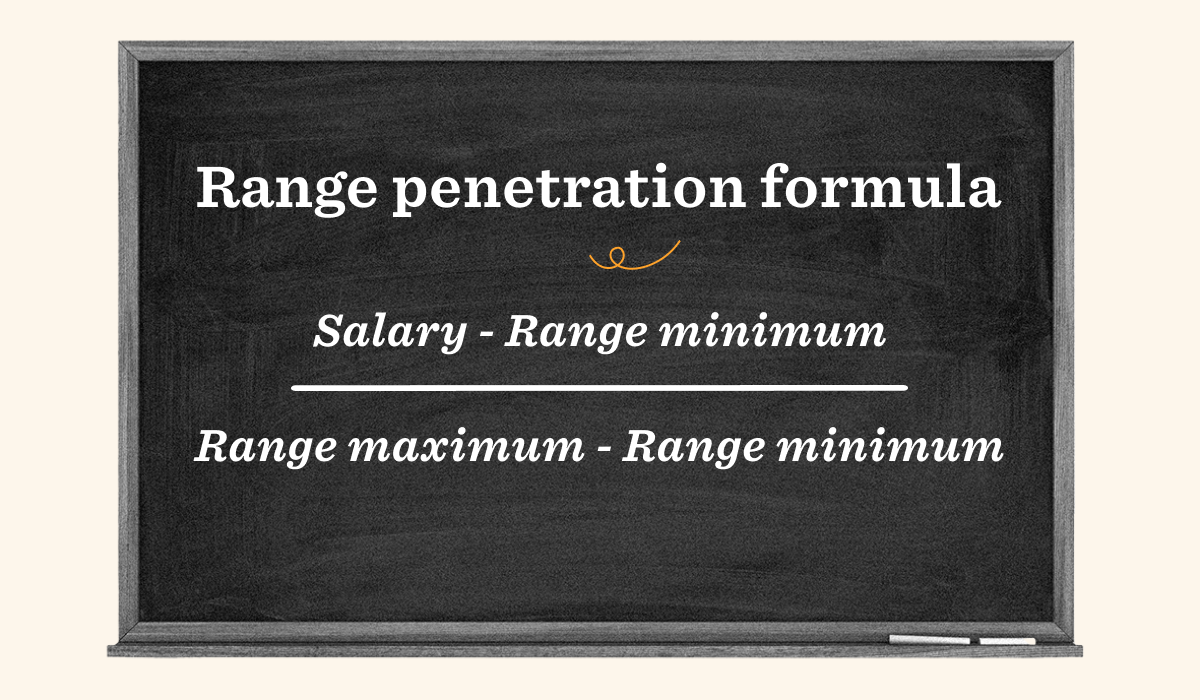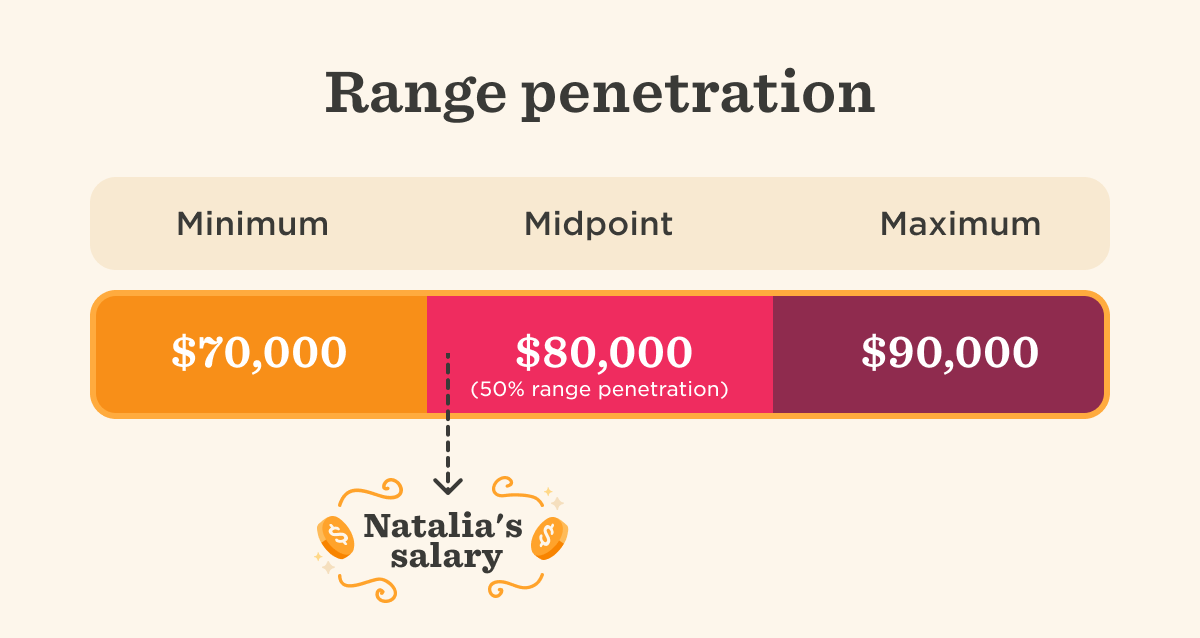Why do people leave their jobs?
Bad bosses, a poor work-life balance, and the lack of growth opportunities are all common answers. However, if you’ve seen a higher-than-expected turnover rate in the last year—with people leaving from different levels of seniority and departments across the company— chances are you need to look at compensation.
Low pay is one of the leading reasons people leave their jobs. A 2024 report by the Society for Human Resource Management (SHRM) found that 20.5 percent of people who quit their jobs did so due to unsatisfactory pay. Insufficient raises may also play a role, as a survey by the ADP Research Institute revealed, showing that workers anticipate pay increases of more than 5 percent on average.
If you suspect low salaries are the main reason for turnover at your company, then it’s time to explore whether you are paying your people fairly and according to the market rate. While there are several metrics you can use to ensure fair pay, the salary range penetration formula is crucial for understanding and managing pay differences at your organization and how it impacts employee satisfaction.
<<Check out our free compensation analysis template to ensure your team gets paid fairly.>>
What does salary range penetration mean?
According to AIHR, “salary range penetration looks at the position of the salary in its pay band. It lets employees, HR, and compensation professionals know where someone stands in relationship to the entire salary band.”
You can use the salary range penetration formula to compare pay within teams and across your company, ensuring your compensation strategy and pay practices are consistently applied.
What are salary bands?
Before calculating salary range penetration, you must create salary bands or defined pay ranges for every job description in your organization and formalize the minimum and maximum salaries for each role. Once you have your salary bands in place, you can consistently determine how much to pay a new employee and how to define pay raises for more tenured people.
Figuring out where employees fall within their salary bands shows their salary range penetration.
How to calculate salary range penetration
So, let’s get down to business. To calculate salary range penetration, you use the formula:
(salary minus range minimum) / (range maximum minus range minimum) = range penetration.

Let’s break it down with an example.
Natalia is a marketing manager who earns $76,000. The salary range for her role is between $70,000 and $90,000.
To discover Natalia’s salary range penetration, you calculate as follows:
(76,000-70,000) / (90,000-70,000) = 0.3 or 30%.
With a salary range penetration of 0.3, Natalia is 30 percent into her salary range, with 70 percent left until she reaches the maximum salary in the range.

Once you have the salary range penetration result, here are some questions you can explore to determine if Natalia is being paid fairly or due for a raise:
- What is Natalia’s position in the range? Does she fall under or over the midpoint or 50 percent range penetration?
- How does Natalia’s salary compare to that of her peers in the same role?
- Should Natalia’s salary be higher than her less experienced or less productive peers?
- Does Natalia’s track record of productivity and high performance make her eligible for a raise?
Calculating salary range penetration is an important metric that should be reviewed—along with salary bands—once or twice a year, such as during your annual compensation cycle.
Make sure to calculate the range penetration of all team members with the same job title to reveal any pay disparities, and ensure that your people are compensated fairly and equitably.
<<Check out our free compensation analysis template to ensure your team gets paid fairly.>>
Why range penetration matters for retention
People who feel that they’re not paid fairly—whether they are underpaid in general or compared to their peers—will start to feel resentful. These negative feelings will impact how they feel about their job, the company in general, and can also affect their overall performance. Eventually, they may decide to seek other opportunities and leave.
Keeping an eye on salary range penetration at your company and market trends in general, can help you retain your people and ensure a happier and more satisfied workforce. Conduct annual compensation reviews and make salary adjustments through merit increases, raises, promotions, or market adjustments to show your people that they are valued and can grow with the company.
How salary range penetration is related to diversity and inclusion
Ensuring equitable salary distribution across all employee demographics is crucial for fostering an inclusive workplace. Yet, despite global efforts, Payscale’s 2024 Gender Pay Gap Report shows that there’s still a pay gap between men and women, with women earning $0.99 for every dollar earned by men in the same positions, taking experience, education, and job role into account.
A 2021 report by the US Office of Personnel Management (OPM) found similar pay gaps in the federal workforce based on race. Black men earned approximately 6.7 percent less than white men, Hispanic men earned around 5.4 percent less, and Asian men earned around 3.6 percent less.
Calculating salary range penetration helps you discover if there are pay gaps in your company, whether based on gender, race, age, or any other factor. If you see, for example, that women, LGBTQIA+, or older employees have lower penetration rates than their peers, then you’ll know that there may be a compensation equity problem, and can start working to fix it and close any gaps by introducing a fair and equitable compensation strategy.
It’s time to close the pay gap
Closing pay gaps and ensuring equitable compensation is more than a best practice—it’s a business imperative. By calculating salary range penetration, you’re not only fostering fairness and inclusion but also driving retention and engagement across your workforce. Regularly reviewing pay practices helps uncover disparities, stay competitive, and build trust among your people. Let’s work to create workplaces where everyone feels valued and supported.
<<Check out our free compensation analysis template to ensure your team gets paid fairly.>>
FAQs about salary range penetration
What is a good salary range penetration percentage?
Many organizations aim for an average salary range penetration of 50-70 percent, as this indicates that people are paid competitively while still allowing room for growth and merit-based increases.
What tools are available to calculate salary range penetration?
To calculate salary range penetration, you can use an HCM like Bob, which has built-in compensation analysis features. You can also use the salary range penetration formula within Excel or Google Sheets to calculate penetration percentages. Finally, you can use a salary range penetration calculator, such as this one from The Human Capital Hub.
What does position in range calculation mean?
Position in range calculation determines where an employee’s salary falls within their assigned salary range, expressed as a percentage. This metric helps organizations assess if employees are underpaid, paid competitively, or overpaid relative to the range and their role.
Recommended For Further Reading
What is the role of salary range penetration in promotions?
Salary range penetration plays a key role in promotions by guiding how much an employee’s pay increases when moving to a higher-level role. It helps ensure promotions align with internal pay structures and external benchmarks, preventing over- or underpayment. Organizations often adjust salaries to bring employees closer to the new range’s midpoint based on experience, performance, and market competitiveness.
How often should salary range penetration be reviewed?
You should review salary range penetration annually, such as during compensation planning or performance review cycles. However, reviewing it mid-year or whenever market data is updated will ensure you stay competitive. By conducting regular reviews, you can proactively address pay equity, market shifts, and employee retention concerns.


